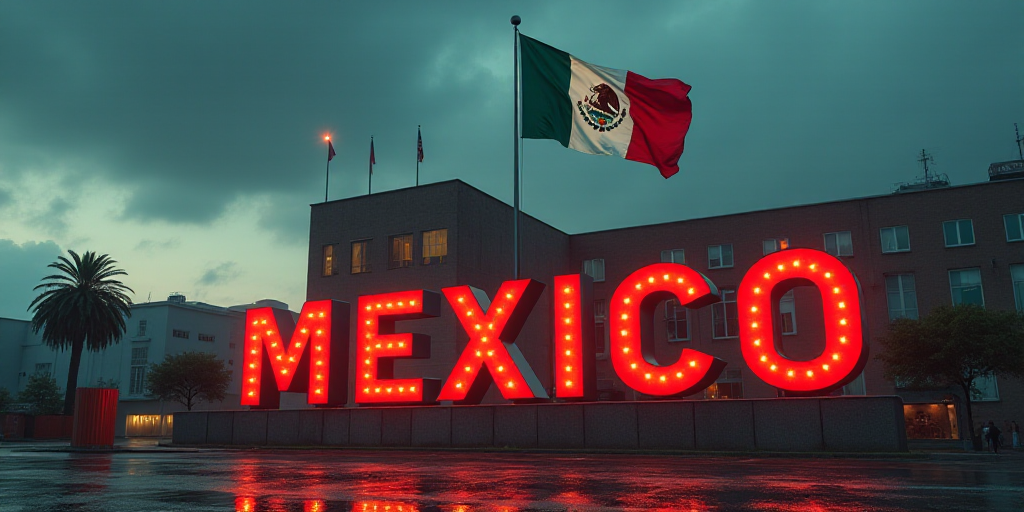Tianguis Turístico 2025: Carlos Martínez Velázquez Outlines Strategies
The Mexico City government is prioritizing increasing both domestic and international tourist arrivals by at least 30% over the next five years, according to Carlos Martínez Velázquez, General Director of the Mexico City Tourism Promotion Trust.
The Goal
By 2030, the capital aims to welcome an additional 5 million tourists, primarily from international markets. This would represent a significant boost in tourism for Mexico City.
Three Strategic Approaches
Martínez Velázquez outlined three key strategies to achieve this goal:
1. Tourism Promotion
International marketing campaigns will be launched starting in the second half of 2023, along with increased participation in international trade shows. This will help raise Mexico City’s profile as a premier travel destination.
2. Infrastructure Development
To accommodate the growing number of tourists, Mexico City requires more hotels and improved infrastructure. The Fondo Mixto de Promoción Turística de la Ciudad de México has recently adjusted its focus to include investments in tourism infrastructure, such as transportation, public spaces, and enhancing the city’s image.
By 2026, approximately 3.3 million new hotel rooms are projected to be added in Mexico City.
3. Convention and Conference Tourism
Efforts will be made to attract more conferences and conventions, thereby boosting the city’s economic benefits from tourism.
Decentralizing Tourism with Seven Corredores Turísticos
Mexico City is working on seven distinct tourism corridors in various neighborhoods to distribute tourism more evenly across the city. These corridors include:
- Southern area, including San Ángel, Chimalistac, Coyoacán, and Estadio Azteca
- Xochimilco and surrounding natural areas, which constitute 60% of Mexico City’s mountains and conservation lands
- Religious tourism route featuring the Basílica de Guadalupe and Zócalo
- Cultural tourism in the Historic Center, Mexico City’s Fine Arts School, Garibaldi district, and Chapultepec
- Polanco, the heart of Mexico City’s most important hotel corridor
These routes will be enhanced with signage, basic tourism infrastructure, and promotional materials. A specialized website will also be developed to showcase these unique Mexico City tourism experiences.
Mundial 2026
With Mexico City hosting at least five matches in the 2026 FIFA World Cup, Martínez Velázquez emphasized the importance of creating memorable experiences and activations in the city’s most iconic locations, allowing residents and visitors to engage with the tournament and participate in various activities.
Gastronomy: Michelin Guide 2025
In a significant move for Mexico City’s culinary scene, the capital will host the Michelin Guide 2025 gala. Martínez Velázquez highlighted that this would further establish Mexico City’s reputation for exceptional gastronomy on a global scale.
Aeroports
To support the tourism growth target, Martínez Velázquez stressed the need for robust airport infrastructure. The federal government has committed at least 8,000 million pesos for the renovation and improvement of Benito Juárez International Airport’s Terminals 1 and 2.
Additionally, work is underway to ensure the Felipe Ángeles International Airport’s train connecting it to Buenavista is operational by the end of 2023.
Key Questions and Answers
- What is the main goal of Mexico City’s tourism strategy? Increase tourist arrivals by 30% over five years, targeting an additional 5 million visitors by 2030.
- What are the three strategies to achieve this goal? Tourism promotion, infrastructure development, and attracting more conventions and conference tourism.
- How is Mexico City decentralizing tourism? By developing seven distinct tourism corridors in various neighborhoods, distributing tourism more evenly across the city.
- What role will gastronomy play in Mexico City’s tourism growth? Hosting the Michelin Guide 2025 gala will further establish Mexico City’s reputation for exceptional gastronomy on a global scale.
- What investments are being made in airport infrastructure? At least 8,000 million pesos are committed for the renovation and improvement of Benito Juárez International Airport’s Terminals 1 and 2.






